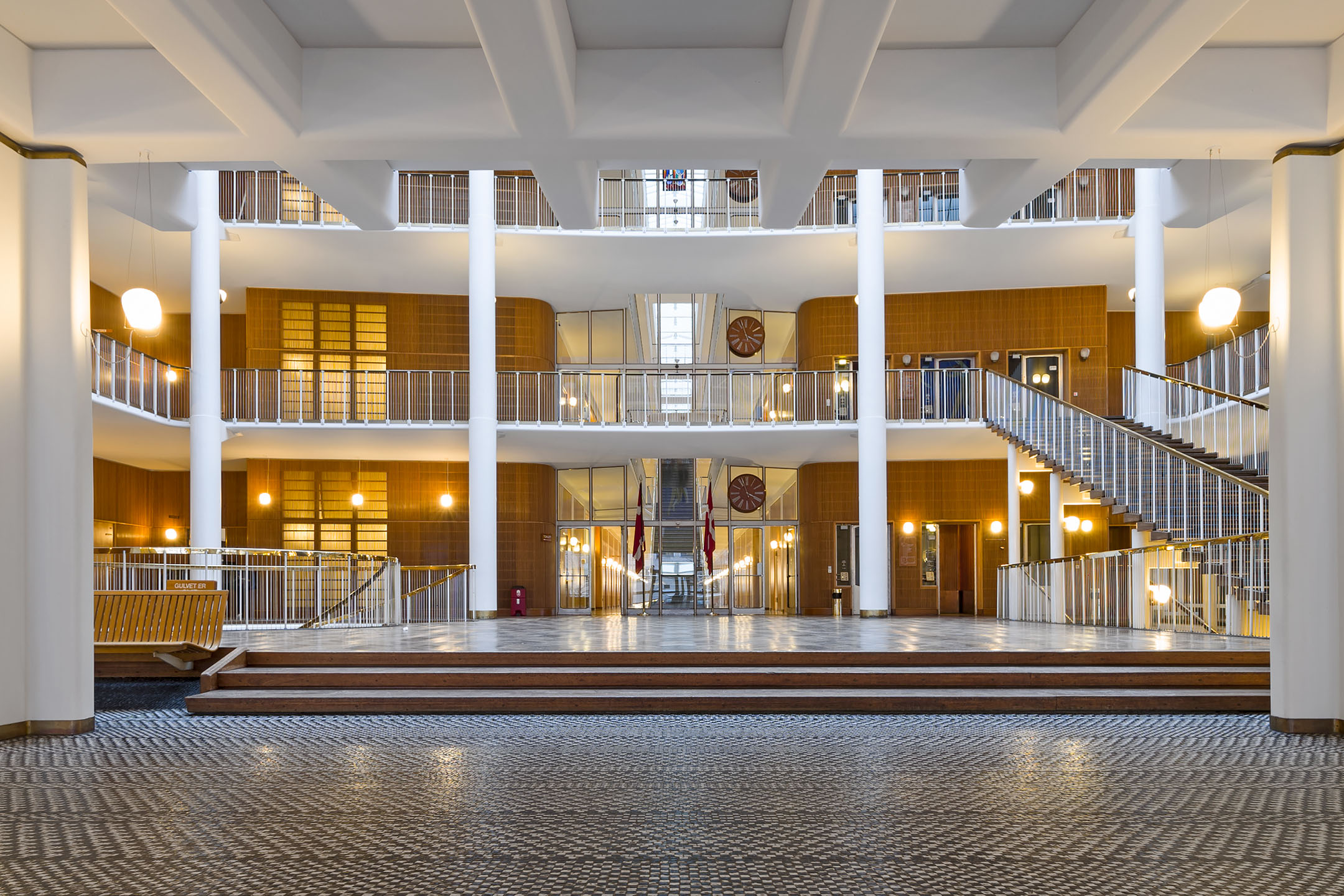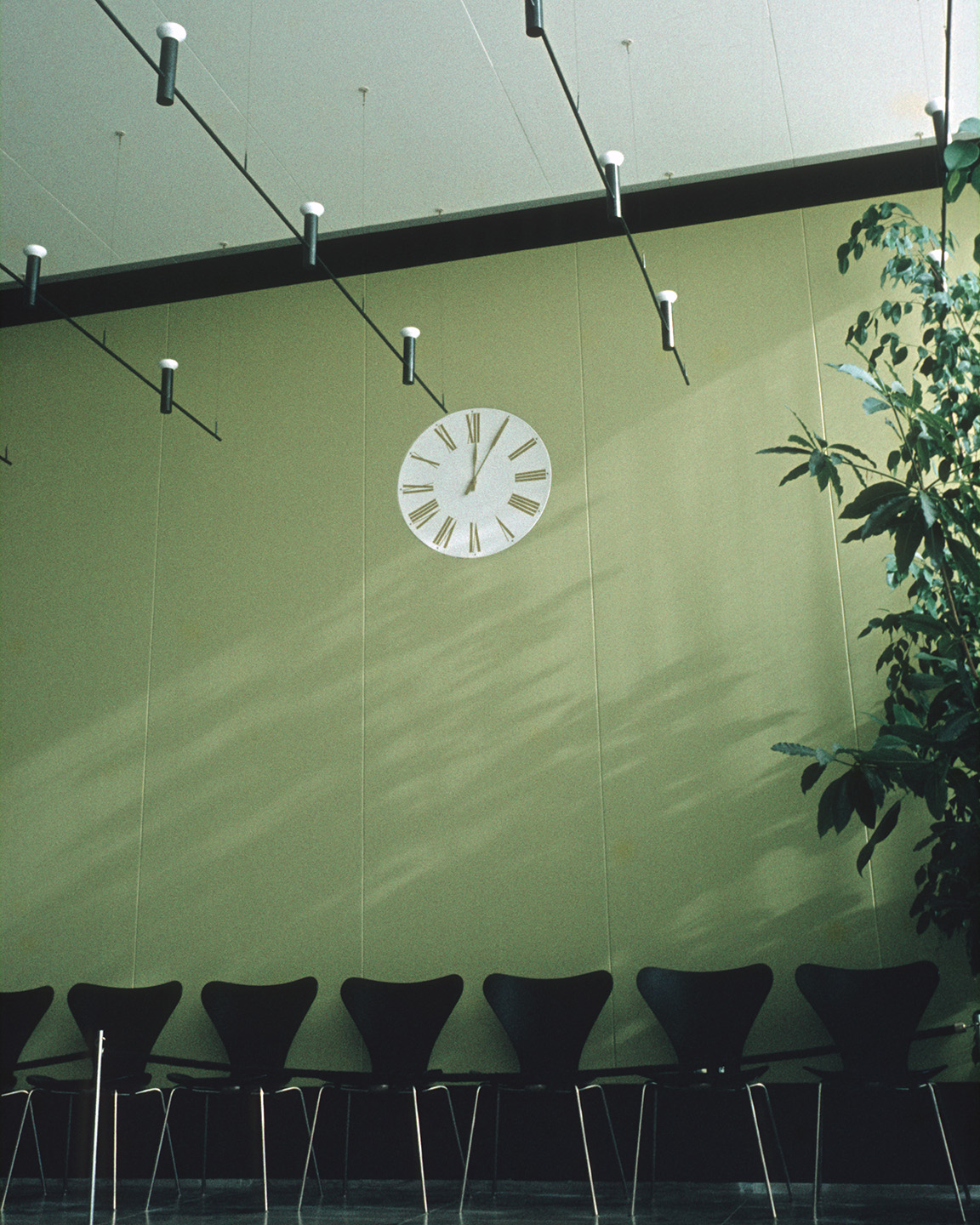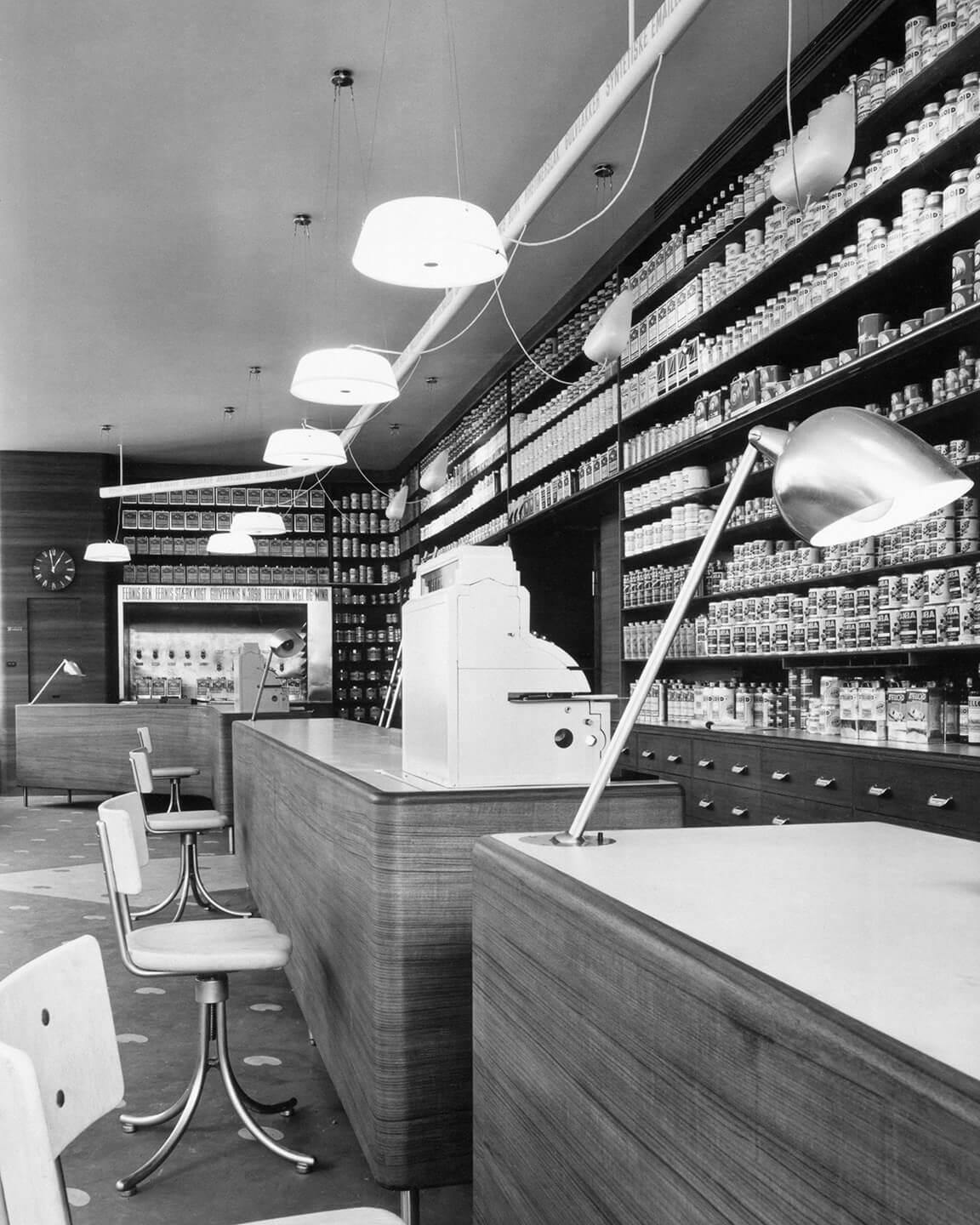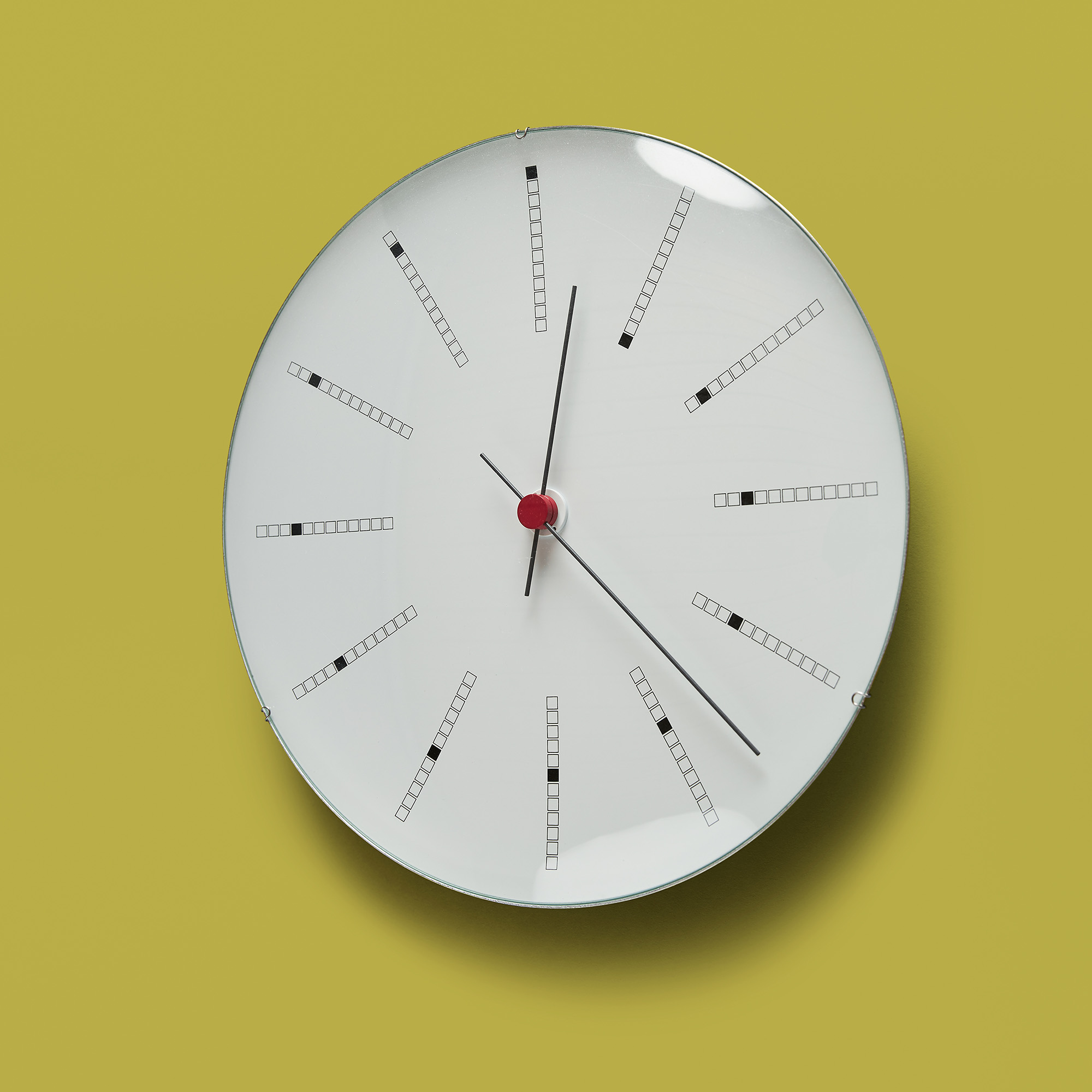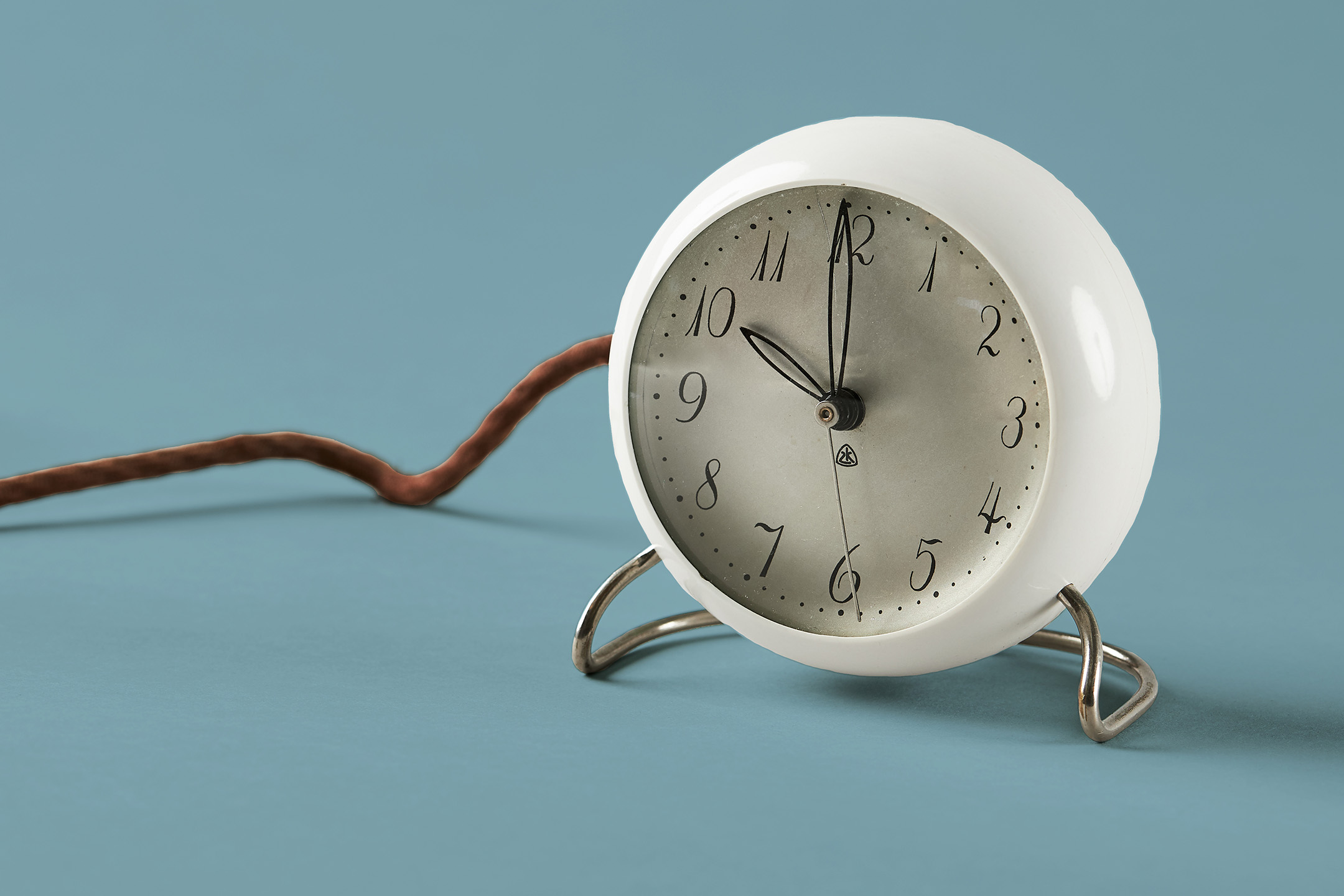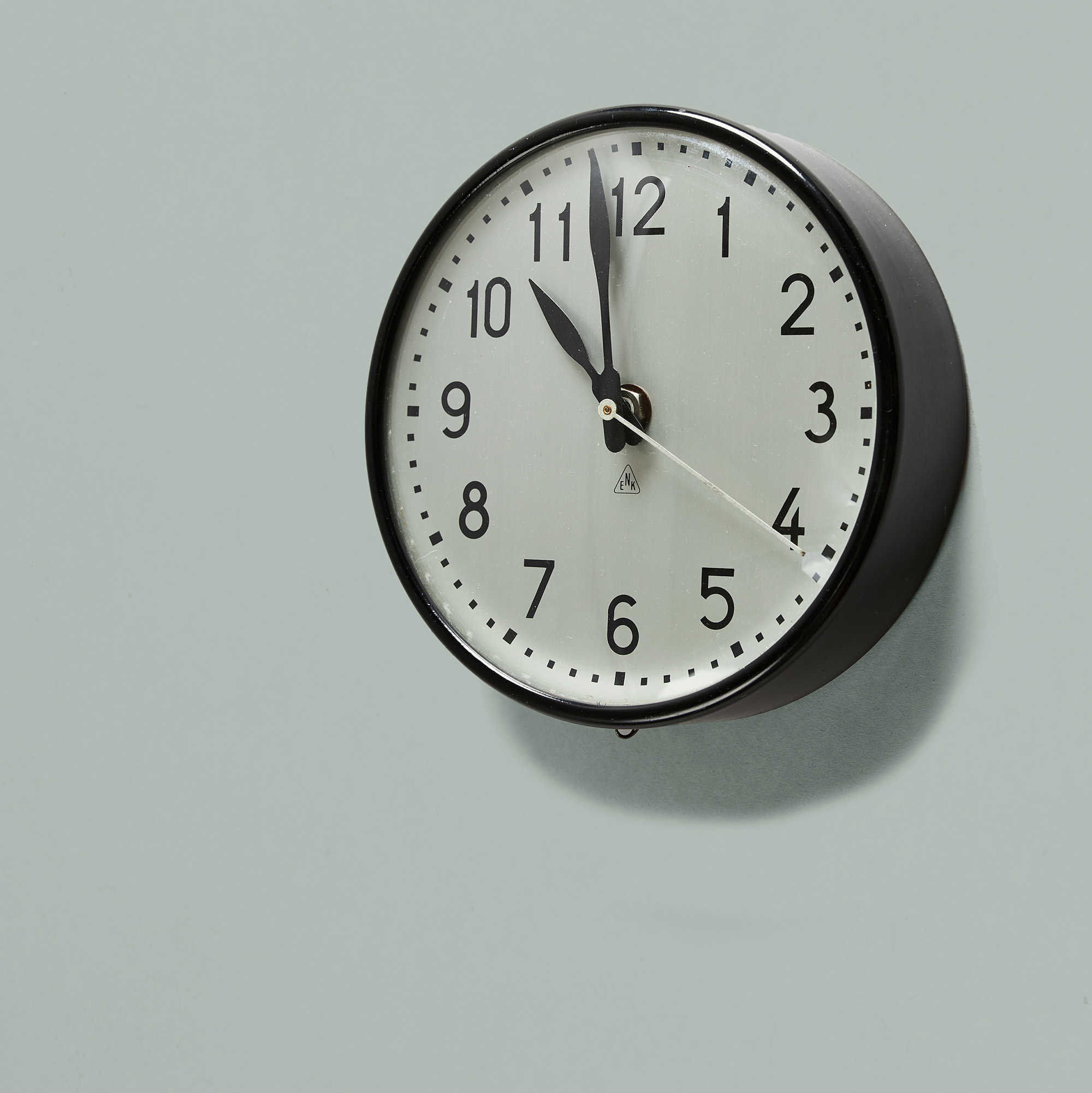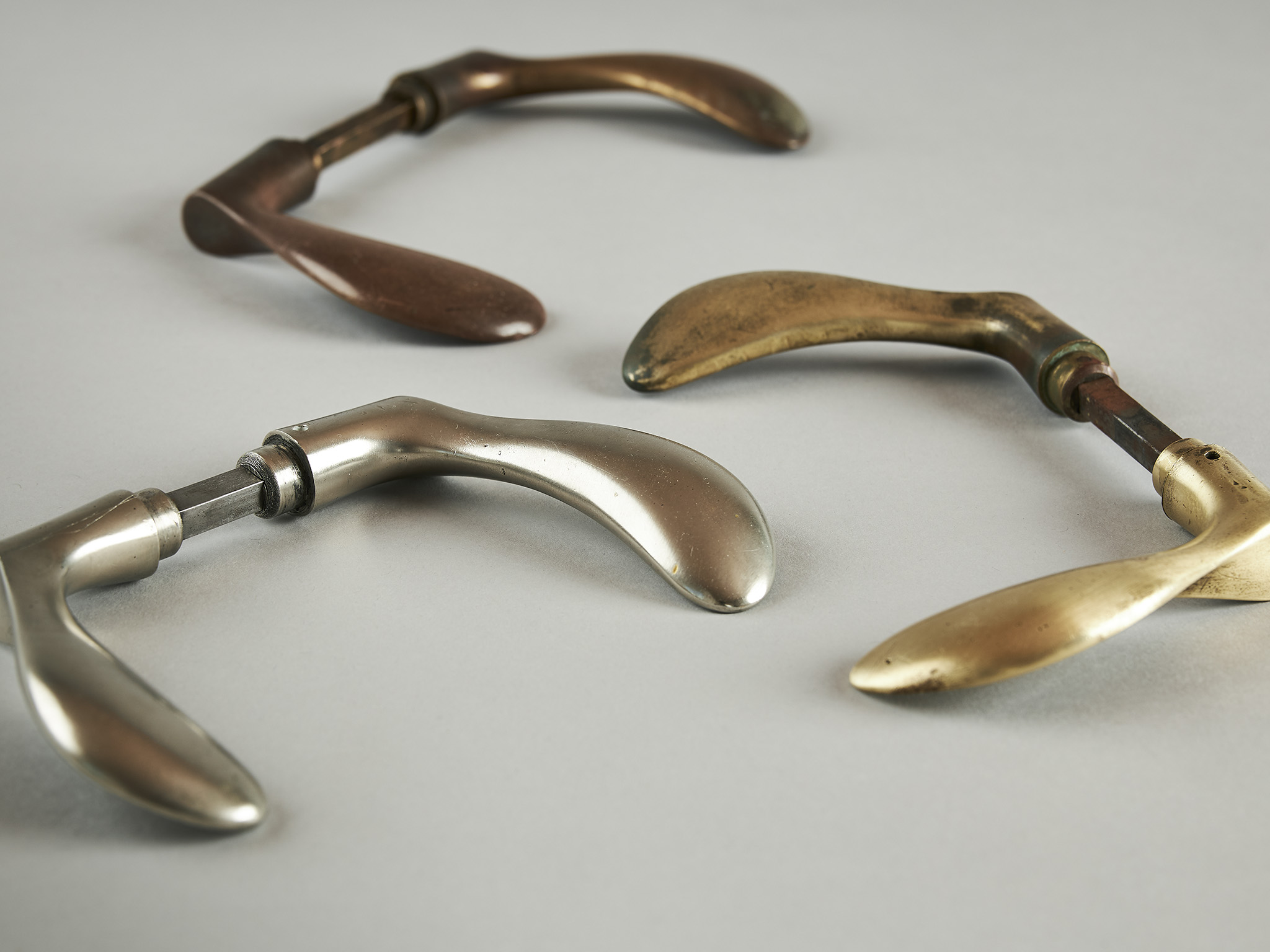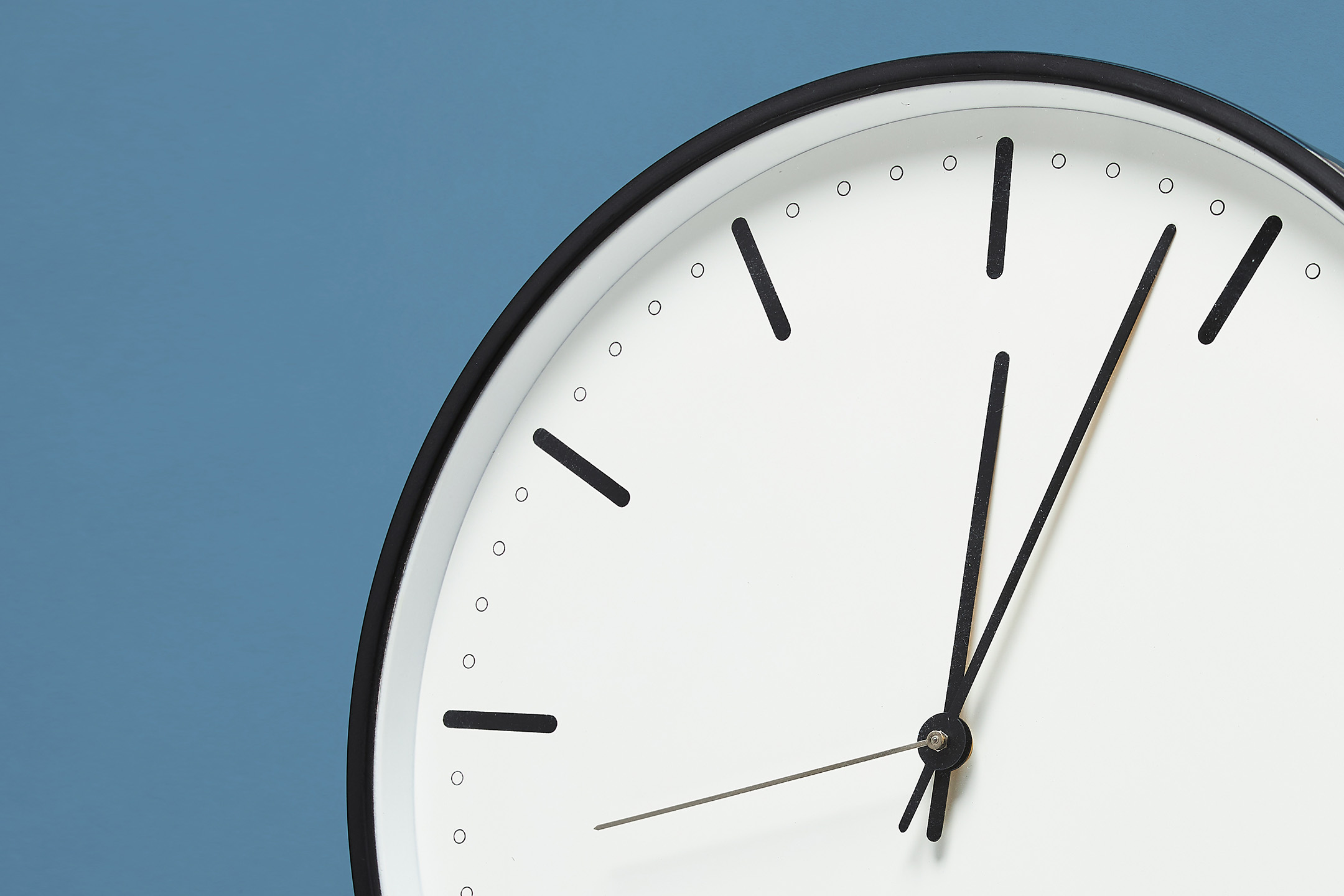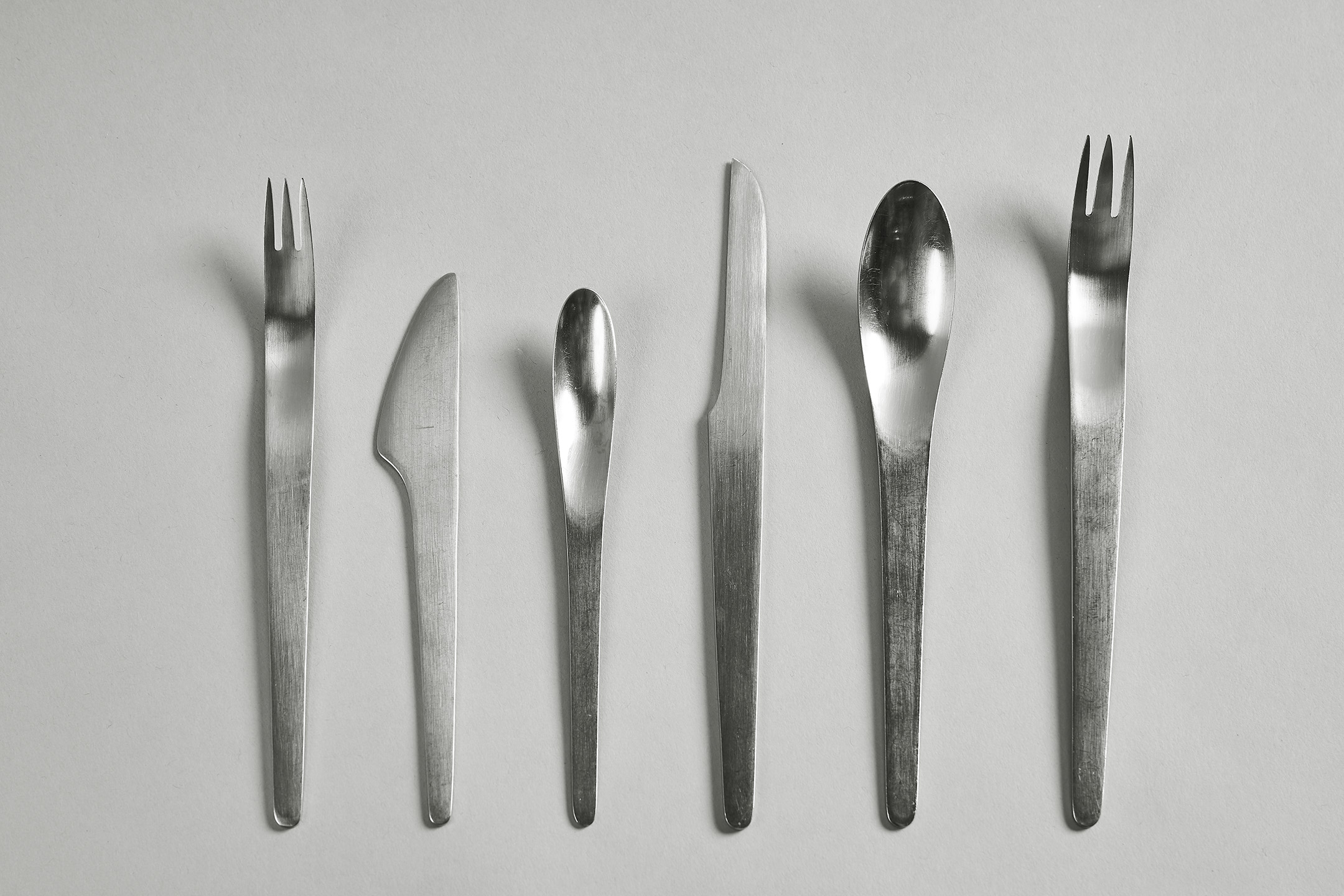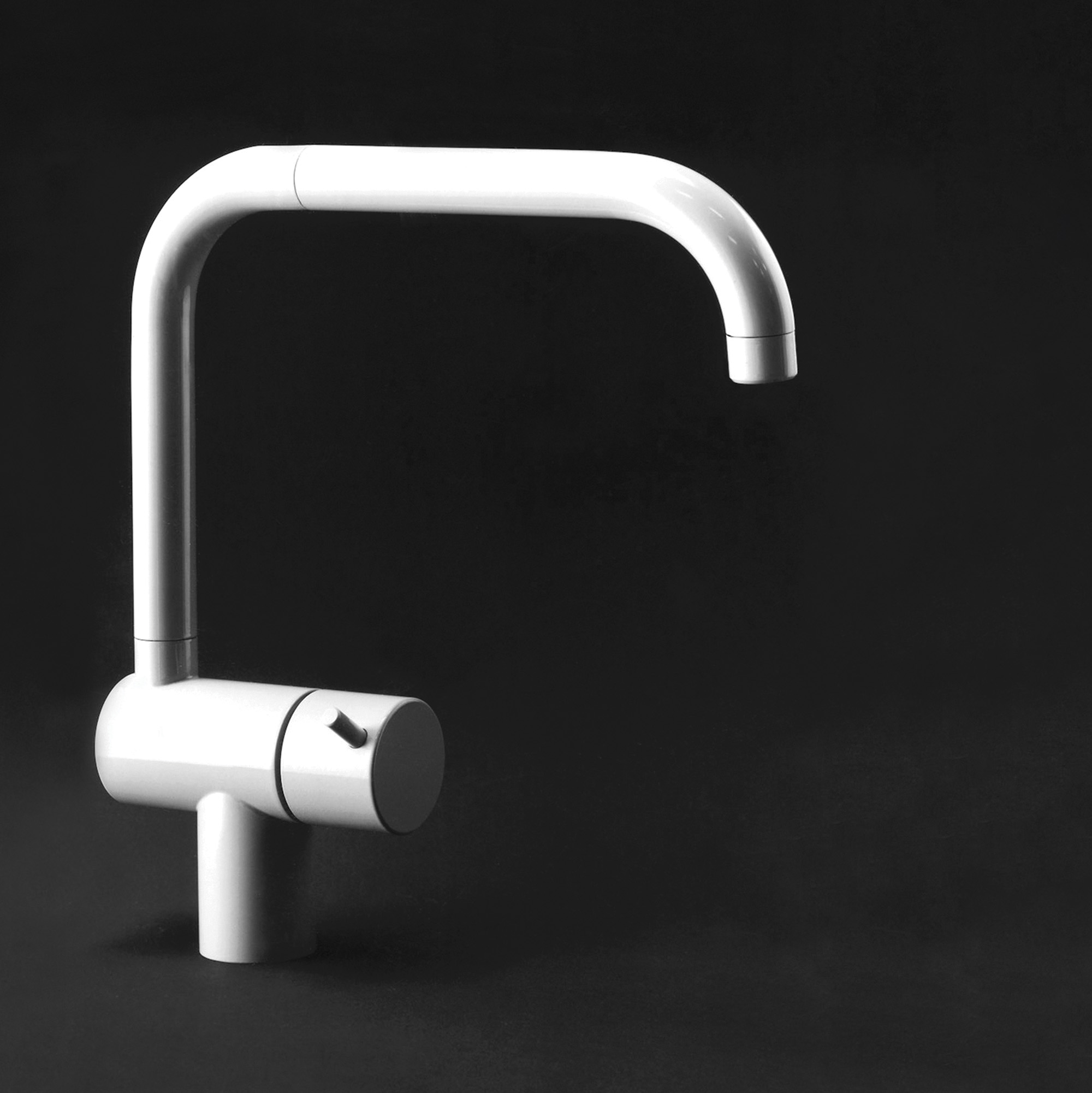During the interwar years, Arne Jacobsen designed several Roman numeral clock faces. This classic design exemplifies how Arne Jacobsen found inspiration in classical and historical works and turned them into modern, contemporary designs.
Arne Jacobsen often integrated clock designs in the elaborate total interior designs he composed for his architecture. In 1937, he completed the Stelling House in central Copenhagen, and in 1942, he co-designed no less than two functionalist town halls, Søllerød Town Hall with Flemming Lassen and Aarhus City Hall with Erik Møller. In all these buildings, large clocks with Roman numerals made in exclusive materials greeted people as they entered. Later, when completing Rødovre Town Hall in 1956, Arne Jacobsen installed a clock with Roman numerals in the council hall and on the facade, where it hangs today as the only ornamentation on the strict, minimalist building.

